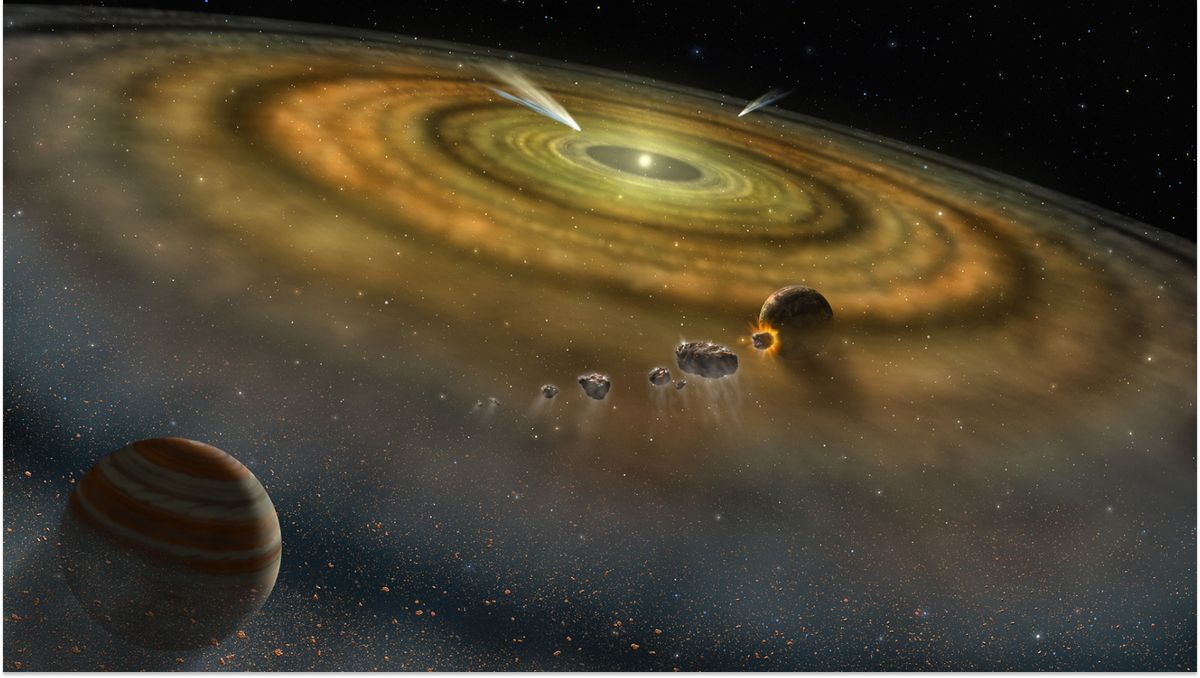It would appear that the so-called “great instability” event that wreaked chaos among the planets, sending the gas giants careening through space until they settled into the orbits we know today, occurred between 60 and 100 million years after the birth of the solar system. This is the conclusion of some careful scientific detective work that has connected a type of meteorite to an asteroid that was once pushed around by those marauding planets.
What’s more, scientists believe the migrating planets — primarily Jupiter — could have led to the formation of Earth’s moon by destabilizing the orbit of a Mars-size protoplanet called Theia. This destabilization may have instigated a collision with Earth that sent debris into space. It is this debris, scientists believe, that may have formed the moon.



Jupiter is probably also why we have water on Earth. Since it pulled ice comets and dust out of the outer regions of the solar system towards the inner parts where Earth orbits. When Earth formed it was too hot to retain any water so all the water on Earth came after the formation.
So could it be that if we filter for solar systems with gas giants in the outer rings and smaller, rocky plants in the interior, we might increase our odds of finding an earth-like exoplanet?
Because the universe is infinite. Yes! Is it a good filter. Who knows lol